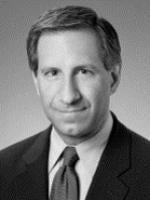In Janus Capital Group, Inc. v. First Derivative Traders, No. 09-525, 2011 WL 2297762 (U.S. Jun. 13, 2011) (Thomas, J.), the United States Supreme Court held that purposes of a securities fraud claim under Section 10(b) of the Securities Exchange Act of 1934 (“Exchange Act”), 15 U.S.C. § 78j(b), and Rule 10b-5 , 17 C.F.R. § 240.10b-5, promulgated thereunder, the “maker” of an allegedly false or misleading statement is the person or entity with ultimate authority over the statement, including its content and whether and how to communicate it. In so holding, the Supreme Court further narrowed the scope of potential securities fraud liability and aligned with its prior decision which held that a private right of action under Rule 10b-5 does not include suits against aiders and abettors who merely contribute “substantial assistance” to the making of a statement but do not actually make it. Central Bank of Denver, N.A. v. First Interstate Bank of Denver, N.A., 511 U.S. 164, 180 (1994).
Respondent First Derivative Traders (“First Derivative”), representing a class of investors in petitioner Janus Capital Group, Inc. (“JCG”), filed this securities fraud action. JCG is a publicly traded company that created the Janus family of mutual funds. These mutual funds are organized in a business trust, Janus Investment Fund. Janus Investment Fund retained JCG’s wholly owned subsidiary, Janus Capital Management, LLC, (“JCM”), to be its investment adviser and administrator. Although JCG created Janus Investment Fund, Janus Investment Fund is a separate legal entity owned entirely by mutual fund investors. JCM provides Janus Investment Fund with investment advisory services, but the two entities maintain legal independence.
Janus Investment Fund issued prospectuses describing the investment strategy and operations of its mutual funds to investors. The prospectuses for several funds represented that the funds were not suitable for “market timing”. Market timing refers to the practice of rapidly trading in and out of a mutual fund to take advantage of inefficiencies in the way the fund values its shares. The prospectuses could have been read to suggest that JCM would implement policies to curb the practice. In 2003, the New York State Attorney General charged a hedge fund with market-timing trading in certain Janus mutual funds. This disclosure allegedly caused investors to withdraw nearly $14 billion from various Janus funds and, as a result, the stock price fell nearly 25%.
First Derivative asserted claims against JCG and JCM for violations of Section 10(b) and Rule 10b-5, alleging that JCG and JCM made misleading statements in prospectuses for the Janus mutual funds. First Derivative sought to hold JCM liable for the alleged misstatements, arguing that it could be considered to have made the statements in the mutual fund prospectuses.
The United States District Court for the District of Maryland dismissed the complaint, holding that the plaintiffs failed to state a claim. The United States Court of Appeals for the Fourth Circuit reversed, holding that First Derivative had sufficiently alleged that “JCG and JCM, by participating in the writing and dissemination of the prospectuses, made the misleading statements contained in the documents.” The Supreme Court granted certiorari.
The Supreme Court held that for purposes of Rule 10b-5, the “maker” of a statement is the person or entity with ultimate authority over the statement, including its content and whether and how to communicate it. Without control, a person or entity can merely suggest what to say, not “make” a statement in its own right. The Supreme Court held that one who prepares or publishes a statement on behalf of another is not its “maker.” The Supreme Court analogized its ruling to the relationship between a speechwriter and a speaker in that even when a speechwriter drafts a speech, the content is entirely within the control of the person who delivers it; and it is the speaker who takes credit, or the blame, for what is ultimately said.
In application, the Supreme Court held that JCM did not “make” any of the statements in the Janus Investment Fund prospectuses; Janus Investment Fund did. The Supreme Court held that there was no allegation that JCM in fact filed the prospectuses and falsely attributed them to Janus Investment Fund nor did anything on the face of the prospectuses indicate that any statements therein came from JCM rather than Janus Investment Fund. Thus, because the false statements included in the prospectuses were made by Janus Investment Fund, not by JCM, JCM and JCG could not be held liable.
In dissent, Justice Breyer expressed the view that the majority’s decision was unwarranted extension of the rationale of Central Bank from the realm of secondary liability claims to primary liability claims. The decision, the dissent suggested, could be used by companies to avoid primary liability altogether by disconnecting the speaker of a statement from the individuals, such as the board of directors, who may have “ultimate authority” over the corporation’s public statements.
The Court’s decision provides additional guidance regarding the scope of primary securities fraud liability for outside service providers (such as investment advisors and attorneys) as well as various individuals within companies. The decision confirms that direct attribution of statements to specific entities or individuals, so that investors’ reliance can be definitively connected to those specific entities or individuals, remains essential for securities fraud claims. The decision also confirms the Court’s respect for the corporate form and structure.



 />i
/>i
